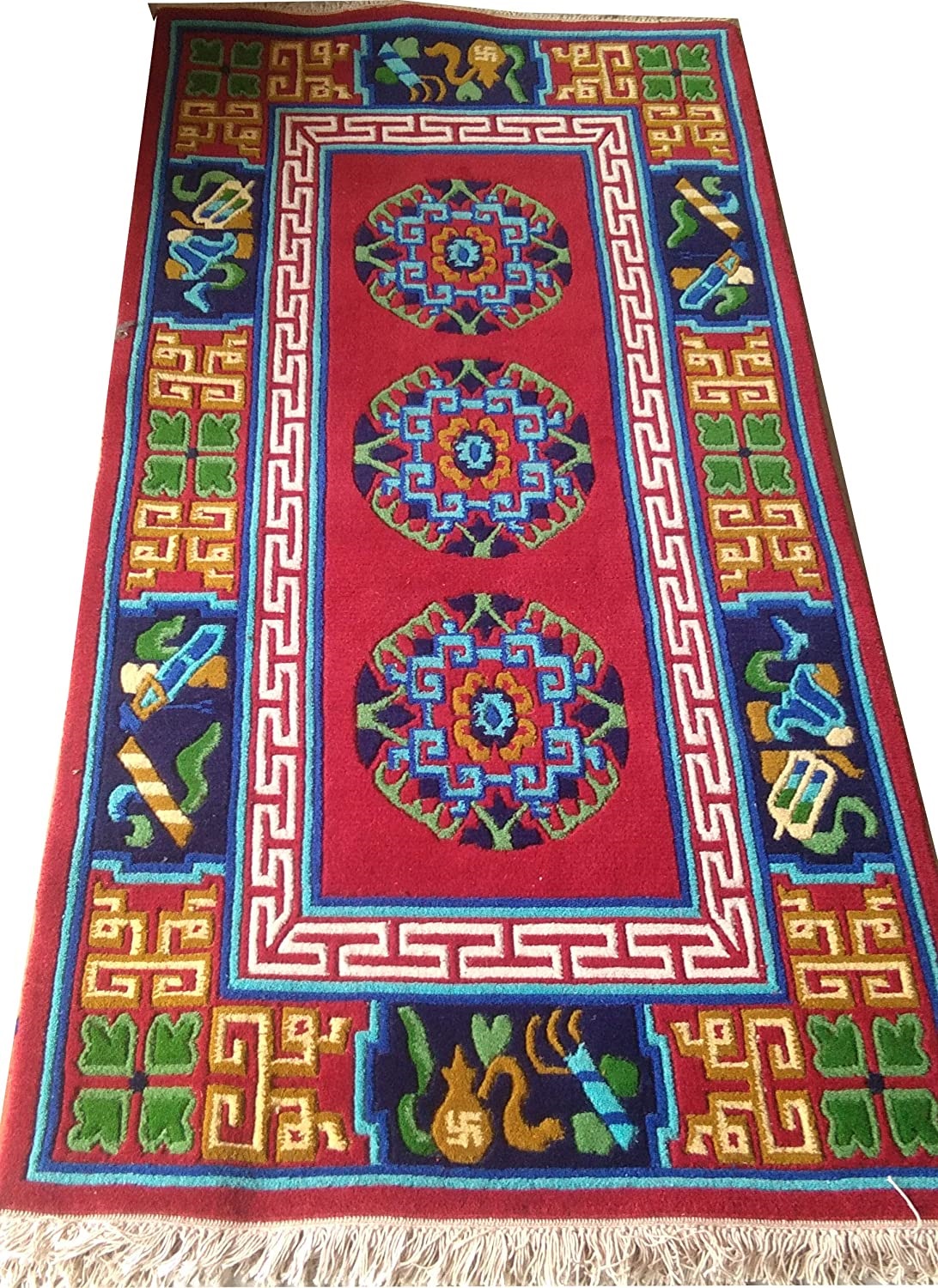
Tibetan carpets or rugs are known for their intricate patterns, vivid colors, and stunning craftsmanship. Handwoven by skilled artisans, each carpet or rug is a true work of art and takes several months to complete. But beyond their beauty, Tibetan carpets hold deep cultural and spiritual significance.
Tibetan carpet-making has a long history, dating back to the 7th century. Originally, Tibetan carpets were used as floor coverings in monasteries and aristocrats homes. Over time, they evolved into a form of religious art, and Tibetan carpets are now renowned for their intricate patterns and vivid colors.
 After coming into exile in India and Nepal in the 1960s, Tibetan carpet weaving became the main source of income for Tibetan refugees livelihoods.
After coming into exile in India and Nepal in the 1960s, Tibetan carpet weaving became the main source of income for Tibetan refugees livelihoods.
Tibetan carpets are handwoven by skilled artisans, who use traditional techniques passed down from generation to generation. The wool used in Tibetan carpets is of high quality and is carefully selected for its softness and durability. The intricate patterns and vivid colors are achieved through a combination of natural dyes and intricate knotting techniques.
Tibetan carpets feature a variety of designs, from traditional patterns to more modern designs. Traditional Tibetan carpet designs often feature religious symbols, such as the knot of eternity, which represents the infinite nature of the universe. More modern designs may feature geometric patterns, landscapes, or even portraits.
They are often used in temples and monasteries as a way of purifying the space and creating a calm, relaxing environment. Many Tibetan carpets are also used during ceremonies and rituals, and are believed to have a spiritual and therapeutic effect.
Tibetan carpets are truly unique and beautiful creations that reflect the rich culture and traditions of Tibet. Whether you are a collector or simply appreciate the beauty and craftsmanship of these unique creations, Tibetan carpets are a true work of art that will enrich any home or space.



Leave a Reply Cancel Reply